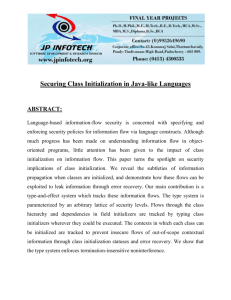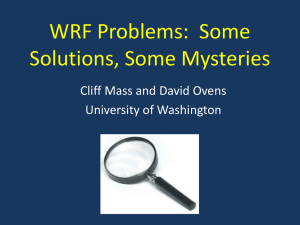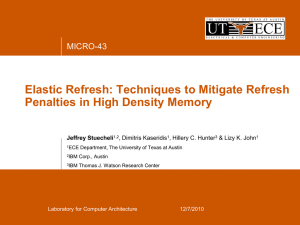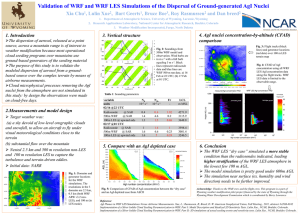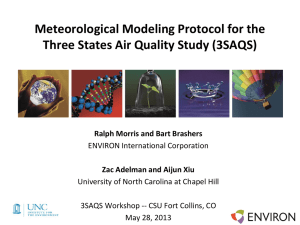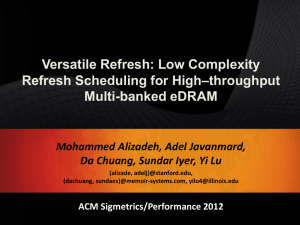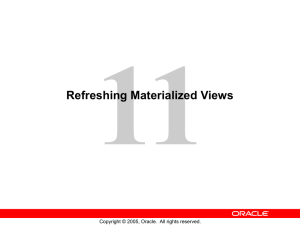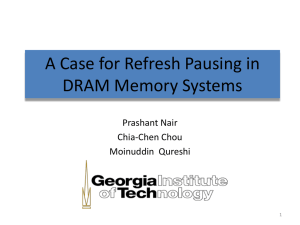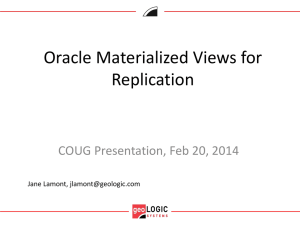Consortium 0605/2014 - University of Washington
advertisement
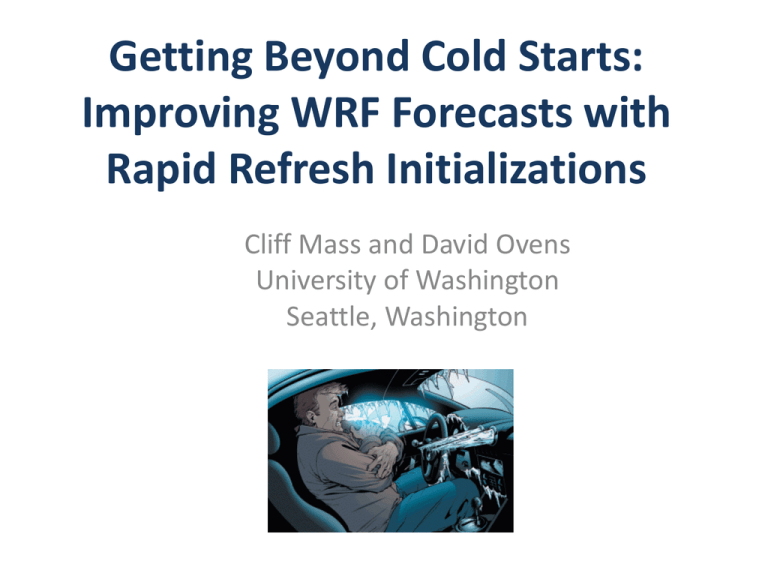
Getting Beyond Cold Starts: Improving WRF Forecasts with Rapid Refresh Initializations Cliff Mass and David Ovens University of Washington Seattle, Washington Is there an easy way to get beyond cold starts? • For many WRF applications, users take either of two routes: – Cold start using GFS, ECMWF, or other operational model grids – High-resolution data assimilation using local data assets using WRFDA, DART EnKF, or something else. • Today, there is potentially another possibility over much of North America: high-resolution initialization using NOAA Rapid Refresh grids. Mesoscale Data Assimilation: Why not let someone else do the hard work? • The NOAA/NWS runs the Rapid Refresh (RR) and High Resolution Rapid Refresh (HRRR) systems hourly, completing analyses and shortterm forecasts. – RR: 13 km grid spacing, 18 hr forecast – HRRR, 3-km grid spacing, 15 hr forecast • Both make use a wide variety of mesoscale data sources, including radar, satellite, mesonets, soundings, aircraft data, and more. Rapid Refresh HRRR Rapid Refresh for WRF Initialization • My perception is that Rapid Refresh has become substantially more realistic and skillful during the last few years. • But one is hard pressed to prove this from stats on their web site! • The 3-D grids are available. • So why not try using RR grids for initialization of WRF? A test: Can mesoscale initialization from RR help with coastal stratus, major problem for the Northwest real-time WRF? June 3, 2014 21 UTC Three Runs • UW Real-time WRF initialized with GFS using YSU PBL, Thompson Microphysics, NOAA LSM, SAS Cumulus Param. ,RRTM radiation • UW Real-Time WRF with same physics, but initialized with Rapid Refresh grids • WRF with RUC physics and Rapid Refresh initialization (RUC LSM, MYNN PBL, Grell CU, Thompson Micro) GFS Initialization Using Rapid Refresh Initialization Using Rapid Refresh Initialization and Rapid Refresh Physics Observed Sounding at Quillayute on the Washington Coast: 6/4/13 at 12UTC 900 925 May 20th, 18 UTC What about the next morning? 12 UTC 21 May 2014 Real-Time GFS-forced 9 Forced by RR 925 RR Init and RR Physics 925 Long-Term Tests April-May Temperature MAE, 12 hr forecast GFS Init RR Init RR Init and RR Physics Dew Point MAE Wind Direction MAE WSP MAE Conclusions • Initialization with NOAA Rapid Refresh grids does help in initializing shallow low clouds and maintaining them early in the forecasts. • Rapid Refresh (RUC) physics package contributes to establishment and maintenance of shallow, stable features. • Overall verification for the entire domain (NW U.S. and adjacent waters) for an extended does not suggest much overall improvement. Conclusions • The effects of initialization fades over the first day of the forecast, but physics effects remain substantial. • Will verify impacts on other seasons before deciding to go with this approach in the operational system. The End
